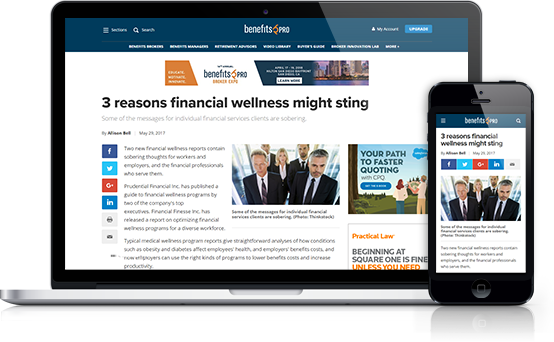Every day over two-thirds of American employees go to jobs where they are not engaged with their work.[1] It's difficult to imagine there are that many people who are dissatisfied or not inspired by their jobs. Throughout the world, engaged employees are becoming extinct. In a recent global business study, 85 percent of human resource and business leaders said that engagement is the top issue they're facing.[2] Yet employers know that attentive and invested employees are necessary for business success. There are many ways to encourage engagement and retain excellent employees. Consider these three areas for success:
- Give more than platitudes – According to a recent Wells Fargo survey,[3] business leaders say maintaining employee productivity is an important short-term and long-term goal. Engagement is a key factor for employee productivity and performance. Employees become engaged with their jobs when they feel their ideas and contributions are valued. Nice platitudes are not enough to genuinely express appreciation for employees' work.
In the past, workers were thrilled to get a paycheck and hear an occasional “thank you” for their work. Today's employees want to make a difference. While they know there are mundane tasks associated with their work, they want to see their ideas enacted and want to know what they do on the job each day positively impacts the business as well as their community. Many businesses encourage employees to volunteer with community organizations, and reward and recognize their contributions. And some employers give employees time to volunteer during the workday.
- Develop trust – Most people like to know their concerns and ideas are recognized. Employers need to be excellent listeners. Some think the best way to know what's on employees' minds is to survey them. But according to the American Psychological Association,[4] employees don't trust surveys and only 50 percent of employees contacted think their employer is open and honest. Trust is an important factor in effective employee engagement and retention.
Instead of relying on employee surveys for information, management team members should get out of their offices and spend time with employees. Get together for lunch, visit during the day and regularly ask their opinions on decisions and business opportunities. Recognize employees for their input when decisions are announced. This type of discussion is stimulating and encourages employees to get involved in the organization.
Although these activities take time, the investment produces huge dividends in employee satisfaction and loyalty. Trust is developed when employees feel that management team members are interested in their input and implement suggested ideas. It's also built when employees are given the freedom to do their jobs and make decisions within their responsibilities. This requires hiring the right employees from the start.
When spending time with employees, management team members should find out the issues and concerns employees are facing, including family and personal needs. Listen to understand their motivations and the type of rewards appreciated. Take the feedback and identify ways to support and encourage employees. For example, examine the benefits package to determine whether it should be enriched to better address employee health needs. In addition to medical insurance, many workers are concerned about taking care of the vision, dental and hearing health of their families. Also look at wellness incentives or productivity enhancement rewards. These efforts can go a long way toward building long-lasting bridges to engagement.
Employee engagement is an important retention issue for employers across the country. There is a war for talent, and it's important for businesses to keep quality, productive employees to compete in the global marketplace. Focus on listening and understanding employees' needs, hiring excellent workers and allowing them to do their jobs, and offering benefits and rewards programs that address personal and family needs.
Learn more about the value of employee wellness programs and tips on keeping employees engaged with their work.
Michael Scheetz is vice president – group marketing for Ameritas, headquartered in Lincoln, Neb. Scheetz joined Ameritas in 2011 and has worked in the insurance industry for more than 15 years. Currently he serves on the education committee for the National Association of Dental Plans. For more information about Ameritas dental and vision, visit ameritasinsight.com or email [email protected].
Complete your profile to continue reading and get FREE access to BenefitsPRO, part of your ALM digital membership.
Your access to unlimited BenefitsPRO content isn’t changing.
Once you are an ALM digital member, you’ll receive:
- Breaking benefits news and analysis, on-site and via our newsletters and custom alerts
- Educational webcasts, white papers, and ebooks from industry thought leaders
- Critical converage of the property casualty insurance and financial advisory markets on our other ALM sites, PropertyCasualty360 and ThinkAdvisor
Already have an account? Sign In Now
© 2025 ALM Global, LLC, All Rights Reserved. Request academic re-use from www.copyright.com. All other uses, submit a request to [email protected]. For more information visit Asset & Logo Licensing.








